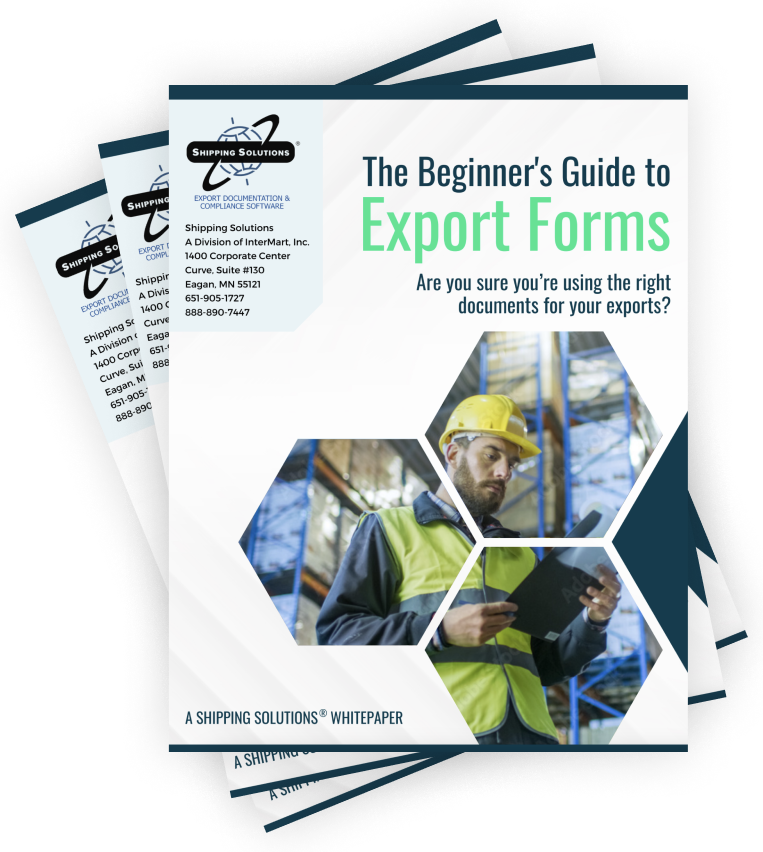The International Trade Blog Export Forms
Export Invoice vs. Accounting Invoice: What's the Difference?
On: February 10, 2020 | By:  David Noah |
4 min. read
David Noah |
4 min. read
 Invoices play an important role in the export process. The invoice is the single export document that describes the entire export transaction from start to finish.
Invoices play an important role in the export process. The invoice is the single export document that describes the entire export transaction from start to finish.
When completed properly, the invoice provides important information to the buyer, freight forwarder, customs, the bank, and other parties in the international transaction. Done wrong, it can cause confusion, delays and disagreements.
Too many exporters—particularly new exporters—don't understand how the invoices they prepare for their exports often require more information than they may include on the invoices they use for their domestic sales. I get too many calls from exporters whose shipments are stuck in customs, or they're having trouble getting paid because their invoice is incomplete.
To help explain how invoices used for your exports may require more information than the invoices you generate for your domestic sales, I like to use the terms export invoices and accounting invoices.
An export invoice is really an umbrella term that encompasses exporting forms like the Commercial Invoice and the Proforma Invoice—forms that indicate the buyer and seller of the goods, a description of the items, the items’ value, and the terms or proposed terms of the sale. Many governments use export invoices for calculating and assessing customs duties and taxes.
Sometimes, customers look at our sample export invoice forms and call our office with questions, worried because our forms have either extra information they’re unfamiliar with or think a form is missing information because it doesn’t have the fields they’re used to seeing on their invoices.
So, what’s the confusion?
The difference is, our customers are comparing standard export invoices to their own accounting invoices—the invoices they use for their domestic sales. They don’t realize these two versions of the invoice different purposes. Accounting invoices are used to get paid and often don't work well for exporting purposes, because these invoices may not include certain information export invoices must have.
Major Differences between Invoices
An export invoice will typically include the following information:
Product Classification
This is either the Schedule B or HTS code. However, there may be some times you may not include an HS number on your invoice, which are listed in our article, Why You Shouldn't Include HS Numbers on a Commercial Invoice.
Country of Origin
This is the last country in which the product was manufactured or significantly altered. This may be different from the country in which the supplier or manufacturer is located or where you purchased the product.
Incoterms 2020 Rules
Incoterms are an internationally recognized standard and are used worldwide in international and domestic contracts for the sale of goods. First published in 1936, Incoterms provide internationally accepted definitions and rules of interpretation for most common commercial terms.
The Proper Value of Goods
Because it may be for customs value only, the export invoice will need to include value of a good that wouldn’t need to appear on an accounting invoice. Exporters have to indicate the true value of goods even if they’re sending the items over for free, as a sample, etc. You wouldn’t do this on your accounting invoice.
You can learn more in our article, Export Compliance: Using the Proper Value on a Commercial Invoice.
Destination Control Statement
The Destination Control Statement is a legal statement required for items controlled under the Export Administration Regulations (EAR) or the International Traffic in Arms Regulations (ITAR) stating that the goods you are exporting are destined to the country indicated in all the shipping documents.
While it’s not a requirement for all transactions, including a Destination Control Statement on every transaction is allowed and is a good practice.
Other Details
- Export license information, if appropriate.
- Import country requirements, if known.
- Additional certifications and statements required by the buyer's country.
- U.S. government-issued certifications to be provided.
Additionally, the original export invoice form must be signed in blue ink, and three copies of the invoice should be provided.
The Main Takeaway
Here’s the point: You need to be aware that an export invoice serves a different purpose than an accounting invoice. Each form has information that serves a different purpose, and you can’t substitute one for the other.
If you mistake an accounting invoice for an export invoice, your goods could be held up in customs due to insufficient information, and you could be opening yourself up for fines or penalties based on that incorrect information.
One of the best ways to prevent this from happening is to have a conversation with the buyer during the sales process about the sales contracts, which type of documents will be used, and what type of information should be included on the invoice to help the goods clear customs.
For help creating a variety of export invoices as well as the other documents that are required for an export shipment, thousands of successful exporters use Shipping Solutions export documentation and compliance software to quickly create accurate export documents. To see how Shipping Solutions software can help your company, register now for a free online demo of the software.
Like what you read? Subscribe today to the International Trade Blog to get the latest news and tips for exporters and importers delivered to your inbox.
This article was first published in March 2017 and has been updated to include current information, links and formatting.

About the Author: David Noah
As president of Shipping Solutions, I've helped thousands of exporters more efficiently create accurate export documents and stay compliant with import-export regulations. Our Shipping Solutions software eliminates redundant data entry, which allows you to create your export paperwork up to five-times faster than using templates and reduces the chances of making the types of errors that could slow down your shipments and make it more difficult to get paid. I frequently write and speak on export documentation, regulations and compliance issues.



